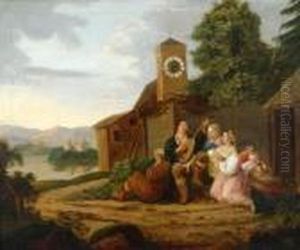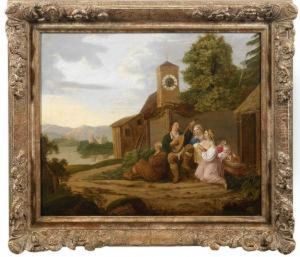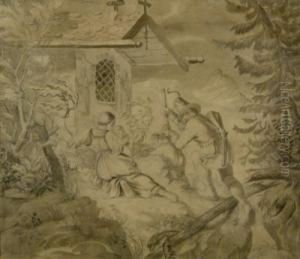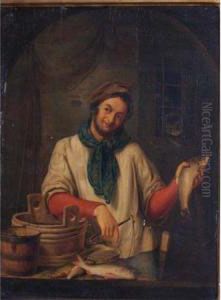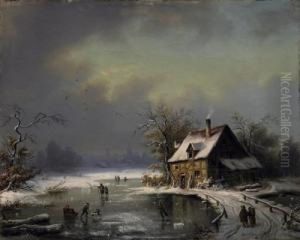Heinrich Gaudenz Von Rustige Paintings
Heinrich Gaudenz von Rustige was a German painter primarily known for his historical paintings, portraits, and genre scenes. He was born on January 15, 1810, in Soest, which was then part of the Kingdom of Prussia. He developed an early interest in art and pursued his artistic training at the Academy of Fine Arts in Düsseldorf, which was one of the most influential art schools in Germany at that time, under the guidance of renowned teachers such as Wilhelm von Schadow, who was a key figure in the Düsseldorf school of painting.
Von Rustige's style was heavily influenced by the academic and romantic traditions of the time. He became adept at capturing historical scenes with a dramatic flair, often focusing on moments of great emotional intensity and significance. His work was characterized by meticulous attention to detail, a vivid use of color, and a strong narrative element. Von Rustige's paintings often depicted scenes from German history, literature, and mythology, resonating with the burgeoning sense of national identity in Germany during the 19th century.
Throughout his career, Rustige participated in numerous exhibitions and received considerable acclaim for his work. He was a member of the Prussian Academy of Arts and received various honors for his contributions to German art. In addition to painting, he was also involved in teaching and became a professor at the Düsseldorf Academy, where he influenced a generation of young artists.
Despite his success, Heinrich Gaudenz von Rustige's name is not as widely recognized today as some of his contemporaries. Nevertheless, he remains an important figure within the context of 19th-century German art history. His paintings can be found in various museums and private collections, offering a window into the historical and cultural sensibilities of his time.
Heinrich Gaudenz von Rustige continued to work and teach until his later years, maintaining his passion for art throughout his life. He passed away on September 12, 1906, in Düsseldorf, leaving behind a legacy of historical and genre paintings that continue to be studied and admired for their technical skill and narrative power.
